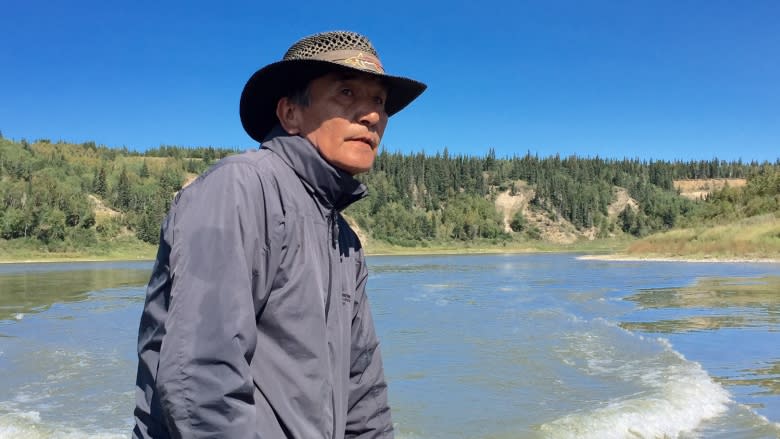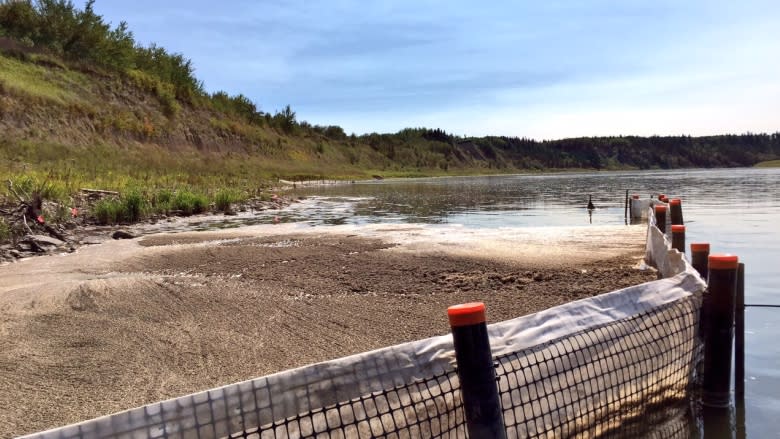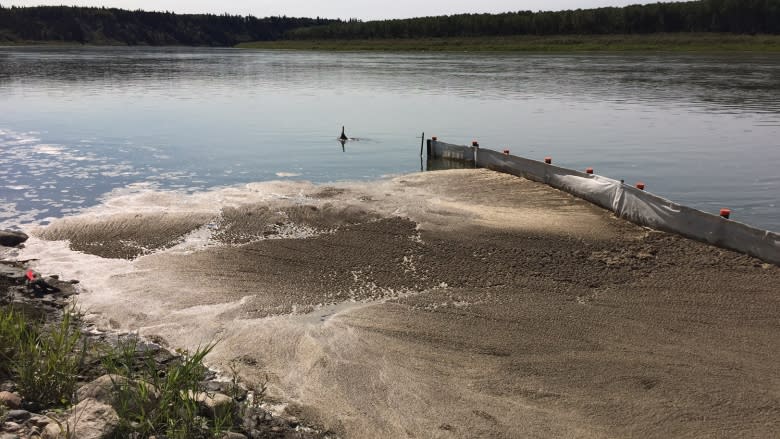'This river has taken a beating': James Smith Cree Nation has serious concerns after Husky pipeline spill
More than a month after the Husky Energy oil spill, people living on the James Smith Cree Nation have serious concerns about water safety in the Saskatchewan River.
"This river has taken a beating," said Alvin Moostoos. "We can't let oil spills interfere with what we have here. The river has brought life to the community. We fish out of it. Spend time with family. It's worth protecting."
The James Smith Cree Nation is located about 60 kilometres east of Prince Albert, Sask., and is downstream from where the North and South Saskatchewan Rivers meet. After the Husky Energy oil spill on July 21, the reserve's chief, Wally Burns, said oil has flowed into the Saskatchewan River to the shores of his community. However, the reserve is still waiting for the oil company to acknowledge the oil in the river is connected to its spill.
Moostoos is a band councillor and said many people on the First Nation feel like they've been a forgotten community throughout the clean up.. The James Smith Cree Nation is hundred of kilometres downstream from where the Husky oil spill started. But Moostoos says he's convinced there are impacts to the river bed and water quality.
"There is oil on the banks. Dead fish. Dead crayfish. Moose cross the river here. Is it going to be safe to eat the meat after they've been drinking from the water?" said Moostoos. "Let's get down the facts and clean up the river."
Last Thursday Husky Energy sent a representative to the First Nation to meet with the Chief and Council. Mel Duvall, a Husky representative, said the company has committed to further meetings and will continue the dialogue.
Moostoos said during the meeting he expressed concern about feeling like a "forgotten" community during the clean up. Burns echoed those concerns and continued to express worry about Husky not being accountable.
"I was asked 'whose oil is this?' Well there's only one oil spill in the river, so when you take that into consideration, the fingerprints of that and then you go upstream on the North Saskatchewan River, it will take you right to Husky oil," Burns said.
Officials from the Water Security Agency said the water tests at the James Smith Cree Nation showed no hydrocarbons, but that the foam did and they are doing further testing on that foam.
Independent sampling and testing
The James Smith Cree Nation has signed a memorandum of understanding with Robix Environmental Technologies to licence water technology and other services including water quality monitoring and testing as it relates to oil spill emergency.
The first results of those tests are expected this week.
The First Nation has also welcomed the help of the Canadian Floating Fence Corporation. Stephen Neal is the CEO of the corporation based out of Calgary. He said it's an honour to be using their technology for this emergency situation.
"I'm living in Prince Albert now and will be here as long as I have to be," said Neal. "Our product recently entered the market and I feel like it could be a difference-maker in the clean up after an oil spill."
Essentially the technology is similar to a boom, that would be placed in the river to stop oil from spreading. However, Neal said his fencing system allows water to easily flow through, capturing more oil.
A series of these fences have now been set up along the bank of the Saskatchewan River near the First Nation.
Moostoos says they are footing the bill for everything right now and is concerned about reimbursement.
"We've spent upwards of $17,000. And Husky has said it isn't going to reimburse us for any of it," said Moostoos. "They said they would pay for a ceremony near the river. That's it."
At this point there is no timeline for that ceremony but Moostoos says they are going to continue to gather water samples and test the quality. Now their focus has shifted to freeze up and what that means for their water source they now feel is compromised.




